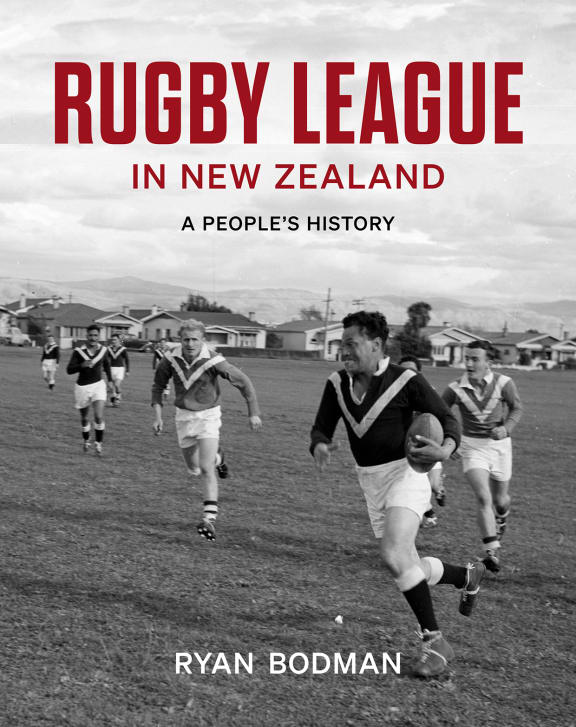Unlike other major New Zealand sports, rugby league has not been well served in the literature sense.
There are exceptions – especially the seminal works produced by John Coffey and Bernie Wood, along with a slew of decent biographies in the 1980s and 1990s – but nothing that tells the whole story, encompassing tragedy and triumph, tears and togetherness.
This book changes all that.
It’s a masterpiece of its genre, examining the history of the sport from the inside out. Bodman makes us realise that rugby league has done well to survive, let alone thrive. The fact it is ensconced as a popular sport in this country is something of a miracle, given the efforts of rugby union over almost a century to stamp it out.
Bodman doesn’t hold back from the awkward truths. As he explains, for the best part of a century league suffered an almost apartheid level separation, actively deprived of playing fields and facilities from rugby backed councils. Students were forbidden – and even punished – for playing the game at school, a scenario that hasn’t existed with any other sport in New Zealand. That active discrimination continued into the 1980s and only really in the last two decades has league been a genuine option for students.

Photo: Bridget Williams Books
Perhaps, worst of all, the New Zealand Rugby Union initiated life bans for anyone who dared to play the other code. As one former All Black said, it would have been “social suicide” to consider switching. But it wasn’t just at the highest level. The NZRU decreed that anyone who played league was a professional, whether they received any income or not (the vast majority didn’t).
It created a stigma, along with a vehicle to marginalise the game, which was successfully employed by schools, local and regional authorities and even – at times – government officials. While that makes for sombre reflections – with decades of unnecessary hardship – this book is also a celebration of a sport that has developed and grown organically. It’s always been a blue collar game – the pursuit of wharfies, trade unionists and freezing workers – which for along time was its greatest strength, given the strong community bonds forged. Bodman tracks the sport’s development over more than a century, weaving in colourful stories from participants across the spectrum.
But rather just a nuts and bolts historical tome, Bodman delves deeper, examining everything from the popularity of the sport among patched gangs to early women’s games in the 1930s.
He explores the boom times of the 1980s and 1990s but doesn’t shy away from the alternative reality, that the rise of the Winfield Cup (now NRL) has had a detrimental impact on the local league scene, particularly in Auckland. The Super League war is well covered, along with the formation of the Warriors and the slow corporatisation of the game via the NRL.
League has changed significantly over 120 years but its roots – built on whanau and community haven’t. Its working class roots meant it was disproportionately affected by economic downturns, especially between the wars and again in the late 1970s and 1980s but it found a way to continue.

Photo: Cole Eastham-Farrelly
The project was a labour of love for Bodman, as he spent the best part of a decade on the book. It shows. The research is profound and the prose is well structured, engaging and lively. The superbly curated photos add to the package; it’s a visual feast, with many rare gems, that paint the picture superbly.
Above all, this is a story of resilience, through numerous hurdles and a profound power imbalance. It will appeal to those with a love of history and sport – as well as strong human tales - and won’t stay on the coffee table for long.
This review by Michael Burgess was originally published on Kete Books and is reproduced here with kind permission.


